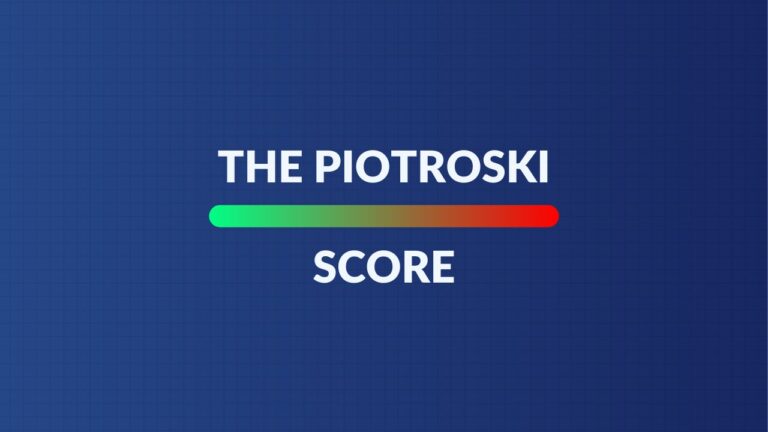Snowflake (SNOW) – Earnings Review – February 28, 2024

Snowflake 101:
Snowflake’s overarching platform is called the Data Cloud. The infrastructure unlocks the ability to affordably store, organize, query and learn from data sources at gigantic scale. The architecture naturally separates the functions of data storage and consumption, unlike legacy data warehouse solutions. That means data consumption capacity is untethered from public computing resources. This removes the computing capacity bottleneck and enhances the scalability of data storage.
Under this framework, I can store as much data as I want without the requirement to immediately process all of that data. Processing utilizes computing capacity. In Snowflake’s case, the storage is done in a centralized data repository in the Snowflake Data Cloud. It’s processed only as needed. Data is utilized virtually, which removes the need for dedicated hardware. This scalable or “elastic” reality limits waste and cost. Snowflake does all of this for clients in a managed fashion to diminish client talent and infrastructure needs. There are a few key products to know & track progress of:
The Snowflake Data Warehouse is where structured data is stored and (on command) processed. Structured data is formatted data. It’s utilized for record keeping and report creation. Data can be easily fetched via structured query language (SQL).
- It just added a new data streaming tool called dynamic tables. It’s in early preview and allows for more automated data querying. With it, reports are automatically updated with current data as that data is ingested by the Data Cloud.
Snowflake Data Lake does what the warehouse does for unstructured data. Unstructured data is unformatted and used to uncover new insights and patterns.
- This debuted in 2020 (Warehouse in 2014). Unstructured data consumption is growing like crazy. It’s up 17x Y/Y as of last quarter. No update today.
- Generative AI leans heavily on unstructured data for model training. This means that proliferation will directly support unstructured data consumption on Snowflake.
The Snowpark product frees developers to work with data in any source code language desired. With it, developers can process and visualize data (through Snowpark functions) and build apps (through Snowpark Native Apps). Snowpark is their data-equipped playground to build new things. Snowpark usage has been growing exponentially Y/Y in recent quarters (newer product).
- Snowpark Container Services was soft-launched in Q4. This allows clients to deploy software containers (software packages) from Snowflake. That, in turn, enables the running of applications without needing to transfer data or manage deployment.
- GenAI models are voracious data consumers. Snowpark Container Services allow GenAI models to run closer to the data that they require. This enhances performance and expedites model training. Snowpark Container Services is a key part of the firm’s GenAI strategy.
Snowflake data sharing is its secure product for, as the name indicates, sharing data among the rest of Snowflake’s participating users. As more opt in, a compelling network effect of relevant data builds and Snowflake’s value proposition deepens.
- 28% of its customers are now sharing their data amongst the Snowflake network vs. 23% Y/Y. Sharing is done via “edges” which are data sharing connections between clients and a data provider.
Miscellaneous tools:
- Snowflake Machine Learning is its suite for training ML models within the Snowflake Data Cloud. This can be used to automate data querying and organization.
- Snowgrid is its omni-cloud tool to unite a client’s data across the various clouds they use.
Demand
- Beat product revenue estimates by 2.1% and beat guidance by 2.7%.
- Beat revenue estimates by 1.8%.


Source: Brad Freeman – SEC Filings, Company Presentations, and Company Press Releases
Profitability
- Doubled EBIT estimates & doubled EBIT margin guidance.
- Crushed $0.18 earnings per share (EPS) estimates by $0.21.
- Beat free cash flow (FCF) estimates by 19%.


Source: Brad Freeman – SEC Filings, Company Presentations, and Company Press Releases
Balance Sheet
- $3.8 billion in cash & equivalents. $916 million in investments.
- Share count rose 2.8% Y/Y (no buybacks this quarter).
- Diluted shares are expected to rise by 10.6% Y/Y for fiscal year 2025. Buybacks would help.
- Headcount crossed 7,000 to reach 7,004 vs. 6,783 Q/Q. It’s still hiring.
Guidance, Vital Context & Valuation
On the margin side, ramping AI investments, including $50 million in added GPU costs, were cited. That $50 million alone only makes up about half of the margin disappointment. It’s dealing with another $30 million in EBIT headwinds due to changing the commission structure to expense immediately rather than over a 5 year period. Together, these two factors make up the majority (not all) of the EBIT margin miss.
In terms of demand, Snowflake refrained from assuming any consumption trend improvements in the annual guide. As a reminder, this is not a recurring revenue model. Revenue visibility is not as good as for a CrowdStrike or a Zscaler. It is a predominantly consumption-based business, which makes it easier for customers to cut Snowflake costs when times are bad, and vice versa. In this light, annual guidance prudence makes sense.
Consumption patterns improved throughout the second half of the year, but its guide assumes the improvement is now over. It’s also assuming zero revenue contribution from any new product besides Snowpark (Snowpark should do about $100 million in revenue vs. $35 million last year). That new assumption was a 6.3% guidance growth headwind, which is the entire source of the product revenue miss.
Interestingly, product efficiency gains are actually also weighing on Snowflake’s growth. Traffic growth of 62% Y/Y in 2023 compared to revenue growth of 33% as it passes performance improvements on to customers. That traffic growth shows you this is not Snowflake being competitively displaced, as leadership reiterated on the call. Headwinds here include its new tiered storage pricing model, which offers more pricing flexibility for customers. It thinks this will accelerate total workload growth over the long haul due to incremental utility, but it will slow growth next year.
Another big piece of the revenue miss is related to something called “Iceberg Tables.” These are open-sourced data storage offerings that are becoming popular due to lower storage costs, open-source integration flexibility and more data control. The proliferation here is leading to data storage and duplication revenue headwinds, with storage making up about 10% of Snowflake’s total business. It’s currently beta testing its own Iceberg Table product, but that won’t go live until June; there’s no revenue contribution from the launch for next year in the guide.
Why did it guide like this? Probably to set a new CEO up for an easy year of outperformance.
Finally, it backed away from its previous timeline to reach $10 billion in product revenue. It still thinks getting there on schedule is possible, but “needs more data” to know for sure. Good job ripping off the bandage and getting all of the bad news out of the way at once. I’m not being sarcastic.
“I think we are definitely being more conservative this year.” – CFO Michael Scarpelli
Call & Release Highlights
Winning Big Boys & a data Network Effect:
- Snowflake has 83 customers with over $5 million in annual revenue vs. 75 Q/Q.
- Snowflake signed its largest deal ever this quarter at $250 million over 5 years.
- Snowflake calls 691 members of the Forbes Global 2,000 its customers.
When Snowflake talks about “shared edges” it’s referring to established data sharing agreements with its customers. As shared edges grow, Snowflake clients enjoy an increasingly strong network effect in which they can leverage data from other customers as well as their own.
GenAI:
Snowflake is the company that allows GenAI models and apps to be run in the exact same environment as a customer’s lucrative data. They can do it all within Snowflake’s managed ecosystem. Operating everything under one virtual roof means better interoperability and lower data storage/transfer costs.
Document AI is one of the products that the team is most excited about. It can take unstructured data from a PDF for example, connect the data dots and drive incremental and actionable insight. It can derive patterns from the seemingly patternless.
Snowflake co-pilot, like other co-pilots on the market, allows anyone to query their data or data from shared edges in a conversational manner. It greatly diminishes the developer knowledge and talent needed to pull and utilize data for decision making. All of this comes “out of the box” in an extremely simplified manner to ensure anyone can use it with overarching support. Snowflake’s massive data ecosystem is a highly compelling asset to effectively train this product.
Cortex is its “managed AI and search product” that integrates with its other AI tools as a “core AI layer shipped with every AI deployment.” This is what powers things like sentiment analysis in a no-code, easy-to-understand way.
CEO Change:
Frank Slootman will retire as CEO of Snowflake after less than 5 years with the company. Sridhar Ramaswamy, the current head of Snowflake AI, will take over. Ramaswamy and Slootman initially met when Snowflake acquired Neeva. Before running that firm, Ramaswamy spent 15 years running Google advertising. Rock-solid resume. He brings deep knowledge and experience within the world of AI. This transition wasn’t timing-based, but due to Slootman simply thinking Ramaswamy is the best person for the job today. With most Snowflake AI products in beta testing while many others have already released theirs, he could be right. Snowflake is a bit behind. Ramaswamy will take the reins to ensure Snowflake leads during this technological wave.
Costs:
The Y/Y gross margin expansion was powered by a contract renegotiation with Google Cloud. SNOW’s growing scale means it can command more of the overall margin opportunity. It secured more favorable rights with AWS and Azure last year as well.
Take
Great quarter; really bad guidance. To me, this is one of the highest-quality software companies in the world. Its growth/scale/margin combination is very good and its revenue retention is elite. The poor guidance, especially with all of the context, is likely to lower the bar for execution for a new CEO. I expect it to comfortably outperform the targets and would also expect this to be an anomaly. Frankly, it’s still too expensive for me to want to start a position. I’ll continue to watch it like a hawk to see if Mr. Market ever gives us a deal here. For now, all I can do is admire Snowflake’s pristine 12 year track record from the sidelines.











